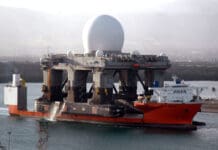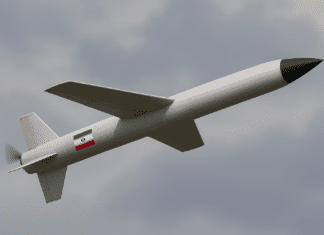This post is also available in:
 עברית (Hebrew)
עברית (Hebrew)
Written by Or Shalom
The growing need for unmanned systems in the world is changing. The world is in the midst of a military and technological revolution, in which unmanned systems are becoming a strategic necessity for countries, security organizations and private companies. The ongoing war between Russia and Ukraine has demonstrated the critical importance of autonomous weapons in modern combat arenas—attack UAVs, reconnaissance UAVs and advanced robotic systems are used by both militaries and non-state armed forces, dramatically changing the nature of warfare and intelligence. At the same time, the increase in terrorism treats and in hybrid warfare in the Middle East (including the integration of conventional and non-state forces) poses new challenges to the security forces, which require a quick, accurate and effective response, while minimizing the risk of human life. However, it is not only military and government powers that use these technologies. Private security companies, police forces, rescue and emergency agencies, as well as intelligence agencies around the world, are adopting AI-based solutions for monitoring, command and control, predicting threats and improving operational readiness. The need for smart systems that operate quickly and accurately, while reducing dependence on limited manpower and avoiding exposing field operators to danger, leads to unprecedented acceleration in the development of smart weapons, autonomous robots and advanced attack and defense systems. In a world where security and geopolitical challenges are becoming more complex, the use of unmanned systems is no longer a luxury, but a real operational necessity. Intelligent autonomous systems, which combine machine learning, computer vision, and decision-making algorithms, provide an unprecedented operational advantage—from revolutionizing intelligence and control to the operation of unmanned weapons in combat arenas and internal security operations. [1]
Artificial intelligence (AI) has become a critical component in the development of unmanned systems that provide a significant operational advantage on the battlefield and in homeland security (HLS) systems. A combination of machine learning (ML), computer vision and computational intelligence enables unmanned devices to operate in higher autonomy, respond quickly to threats and perform complex tasks while minimizing the risk to human life. For example, attack UAVs use advanced image analysis algorithms, modeling enemy behavior (including hidden forces) [2] and design smart routes, enabling them to identify and respond to threats in real time. [3] At the same time, unmanned ground vehicles (UGV) and unmanned surface vehicles (USV) are used for reconnaissance missions, explosive detection, border security and complex rescue operations. The integration of AI enables these tools to make decisions independently, reduce the workload for the human operators and improve operational efficiency. Beyond combat, AI is significantly upgrading intelligence collection and the ability to control unmanned systems. Advanced command and control systems, based on smart algorithms, enable the use of drone swarms capable of performing coordinated tasks without direct human intervention. Smart sensors installed on unmanned devices can detect anomalous patterns, process intelligence, and alert threats with unprecedented speed and accuracy. In an era where asymmetrical threats, terrorism and hybrid warfare are increasing, AI-based unmanned systems are becoming an essential component for armies, security forces, and emergency rescue teams. These systems not only improve the accuracy and speed of the operational response, but also enable forces to act smarter, in a more safe and cost-effective manner in the face of evolving security challenges.
The Use of Artificial Intelligence in Drones Swarms – a Case Study of an Amplifying Force for Dealing with Changing and Unexpected Conditions:
The use of Drone Swarms is one of the most significant operational revolutions in the defense and HLS worlds, and artificial intelligence (AI) is the key to enabling them to operate autonomously (sometimes even independently of external navigation systems), in a synchronized and efficient fashion. [4] Unlike the operation of individual drones, AI-based swarms operate in a distributed model, where each drone serves as an autonomous unit, while simultaneously communicating with the other drones in the swarm, sharing information and responding to the situation in real time. For example, coordination in decentralized decision-making. Using machine learning (ML) and Swarm Intelligence algorithms, drones in the swarm can operate independently of direct human control. Each drone collects data, transmits it to its members to the swarm and to a central control system, and performs dynamic adjustments in accordance with changes in the area of operation. This advantage allows swarms to continue their mission even in the event of disruptions or when some of the drones are destroyed, making them much more durable and flexible than traditional operational systems. Another significant feature of AI is the ability to collect and process intelligence in real time. AI-based swarms are equipped with advanced sensors, thermal cameras and computer vision systems, enabling them to identify, monitor and analyze targets without the need for human intervention. These systems detect unusual patterns, filter background noise, and process vast amounts of information in real time. These capabilities are critical in intelligence missions, securing borders, and countering terrorist threats, especially in dynamic combat zones and crowded urban areas. AI also affects advanced attack and maneuver capabilities in attack missions. AI-based swarms can perform complex operations simultaneously, such as coordinated attacks from multiple directions, rapid attack completion, and dealing with advanced defense systems. Thanks to their high computational capabilities, each drone in the swarm can adjust its course according to changes in the scene, avoiding threats and helping the swarm achieve its goals with maximum efficiency. Using smart swarms presents a significant potential in multiplying power while reducing operational costs and personnel, along with increasing efficiency and speed in decision making. This proves valuable in protecting the force itself by reducing risk and exposure.
AI as a Game Changer for Robotics for HLS Uses:
Security robotics is changing the face of modern warfare and providing military and security forces with significant tactical advantages. Combining artificial intelligence, autonomy, and advanced robotic capabilities enables the development of unmanned tools that perform various tasks – intelligence, reconnaissance, attack, security and electronic warfare – while reducing the risk to soldiers and improving operational efficiency. The uses are varied and include, among others:
- Unmanned Ground Vehicles (UGV) – such as Explosive Ordnance Disposal (EOD) robots, tools for patrolling urban areas and robotic systems for carrying equipment for soldiers. [5]
- Autonomous maritime vehicles (USV & UUV) – used to protect ports, detect mines and anti-submarine warfare, while having advanced maneuverability in water. [6]
- Autonomous systems suitable for various land or aerial purposes [7]
The combination of AI and ML (machine learning), computer vision and real-time data processing gives robotic systems the ability to understand the environment, make autonomous operational decisions, and perform tasks without human intervention. Armed drones and sophisticated ground robots can identify targets, design an optimal approach route and execute a strike within seconds. [8] In urban battles and complex warfare zones, autonomous systems enable smart maneuvering in a dangerous environment, such as detecting threats behind walls, distinguishing hostile fighters in a civilian crowd, and predicting enemy patterns. In addition, artificial intelligence enables the coordination of multiple robotic systems, such as swarms of drones operating in combination with autonomous ground units. The benefits translate to tiebreakers, from reducing risk to operating forces, to achieving operational flexibility and operating in complex situations, to smart savings in operating costs.
The Role of R&D and Cooperation Between Industries, Academia And Security Forces as the Key to Technological Innovation:
The transition from traditional combat to smart combat changes the rules of the game. However, it requires constant research, development and improvement. This is based upon cooperation between industry, academia and security officials. The defense industry provides manufacturing, integration and commercialization of advanced technologies, while the academia plays a critical role in research and development of breakthrough algorithms in the fields of artificial intelligence, computational learning and autonomy. At the same time, security forces, police forces, and intelligence agencies define the operational challenges and request solutions capable of meeting the needs of the field. Close collaboration enables a process of scenario-based development, in which technological innovation is adapted in real time to changing operational requirements. Through technology incubators, shared development centers, and agile procurement models, it is possible to accelerate the process of bringing new systems into operation, reduce development times and ensure that advanced technologies are optimally integrated into the battlefield and homeland security areas.
The author is a security, cyber and HLS technology expert and consultant to government ministries and defense industries. He holds a master’s degree, as well as civil and national qualifications in the realm of HLS and Cyber Security. He has experience in consultation and business development for security companies and groups in matters of planning and building defense, innovation and security technology, exercises, and training in security and cyber.
[1] https://www.youtube.com/watch?v=DYjTRZ1GS_k , https://www.youtube.com/watch?v=xZH-4fAP_YI https://www.youtube.com/watch?v=KaRpWEkY1V8
[2] https://www.youtube.com/watch?v=rBeFh7Gjglo
[3] https://www.youtube.com/watch?v=K80n_jWn6Ac
[4] https://www.youtube.com/watch?v=rPul9WKQ6oQ , https://www.science.org/doi/10.1126/scirobotics.abm5954
[6] https://www.youtube.com/watch?v=p66uxwUgboY


























